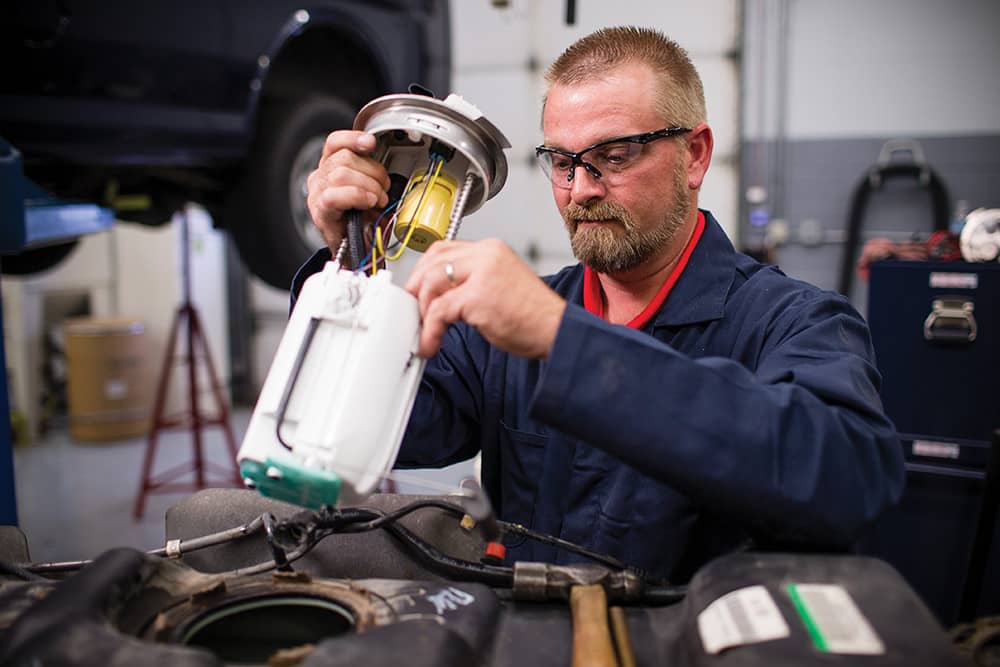You’ve just finished replacing your fuel pump, and you’re feeling a mix of accomplishment and relief. But what’s next?
The journey doesn’t end with the installation. Ensuring everything runs smoothly requires a few more steps. Whether you’re an experienced DIY mechanic or a first-timer, knowing what to do after replacing a fuel pump can make all the difference. In this guide, you’ll discover essential steps to take post-installation to keep your vehicle running efficiently.
From checking the right gauge wire for your fuel pump to other crucial checks, we’ve got you covered. Stay tuned to make sure your hard work pays off and your vehicle stays in top shape.

Credit: carterengineered.com
What Gauge Wire For Fuel Pump
Select the right wire gauge for your fuel pump installation. After replacing the fuel pump, inspect electrical connections and test the system for proper functionality. This ensures efficient fuel delivery and prevents potential issues down the road.
Replacing a fuel pump can feel like a victory. But now comes the next step: ensuring everything works perfectly. One crucial aspect is choosing the right gauge wire for your new fuel pump. This choice can affect performance and safety.
Understanding the essentials can make all the difference in your vehicle’s operation. Understanding Wire Gauges Selecting the correct wire gauge is vital. It ensures efficient power delivery to your fuel pump. – Wire gauge: This refers to the wire’s thickness.
Thicker wires carry more current. – Compatibility: Check your vehicle’s specifications for recommended wire gauge. – Common choice: Many vehicles use 12-gauge wire for fuel pumps. – Performance: Proper gauge enhances fuel pump efficiency and longevity. Factors Influencing Gauge Choice Several elements determine the appropriate wire gauge for your fuel pump.
Consider these key factors: – Current demand: Higher current demands thicker wire. – Length of wire: Longer wires may require a thicker gauge to reduce resistance. – Vehicle type: Different vehicles may have specific requirements. – Safety concerns: Using the correct gauge prevents overheating and potential hazards.
Benefits of Correct Wire Gauge Choosing the right wire gauge offers multiple advantages: – Optimal performance: Ensures fuel pump operates efficiently. – Safety assurance: Reduces risk of electrical issues and fire hazards. – Longevity: Extends the life of the fuel pump by preventing strain.
– Compliance: Meets manufacturer and safety standards. Common Mistakes to Avoid Avoid these typical errors when selecting wire gauge for your fuel pump: – Undersizing: Using a gauge too small can lead to overheating. – Ignoring specifications: Not following vehicle guidelines can cause problems.
– Overextending: Using wire longer than necessary increases resistance. – Overlooking quality: Opt for high-quality wire to prevent malfunctions. Tips for Choosing the Right Wire Gauge Choosing the correct wire gauge requires careful consideration. Here are some tips: – Consult a professional: Seek expert advice if unsure.
– Check vehicle manual: Follow manufacturer’s recommendations. – Consider upgrades: If upgrading the pump, adjust wire gauge accordingly. – Prioritize quality: Invest in durable, high-quality wiring. Selecting the right wire gauge for your fuel pump is crucial. It ensures safety, efficiency, and longevity of your vehicle’s system.
Make informed choices to keep your car running smoothly.

Credit: www.autozone.com
Conclusion
Replacing a fuel pump is just the start. Check all connections for any leaks. Inspect the wiring for correct gauge. Test the fuel pressure to ensure proper flow. Listen for unusual sounds during operation. Drive the car for a short distance.
Monitor performance closely. Keep an eye on the fuel gauge for accuracy. Regular maintenance helps in avoiding future issues. Having these checks will ensure a smooth ride. Always consult a professional for complex problems. Staying proactive saves time and money in the long run.
